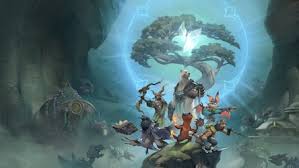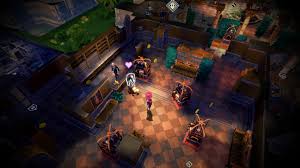Pros:
- In-depth Simulation: “Farthest Frontier” shines with its detailed simulation aspects, covering everything from agriculture and resource management to the health and well-being of the settlers. Players must consider soil fertility, crop rotation, and seasonal changes, adding layers of strategy to the gameplay.
- Visuals and Attention to Detail: The game boasts impressive graphics, with a keen eye for detail that brings the medieval settlement to life. The changing seasons, detailed buildings, and dynamic environment contribute to an immersive experience.
- Dynamic Challenges: The game presents a variety of challenges, including harsh weather conditions, diseases, and invasions, forcing players to adapt their strategies constantly. This dynamic threat landscape ensures that no two playthroughs are the same, offering high replayability.
- Complex Economic System: With a multifaceted economic model, players must manage trade, resource allocation, and economic development, balancing immediate needs with long-term growth. This complexity adds depth to the gameplay, appealing to strategy enthusiasts.
Cons:
- Steep Learning Curve: New players might find the game’s complexity and the multitude of systems to manage overwhelming. The steep learning curve can be daunting, potentially deterring casual players or those new to the genre.
- Pacing and Balance Issues: Some players have noted that the game can feel slow at times, with periods where the progression seems to stall, particularly in the mid to late game. Balancing the game’s pacing remains a challenge, affecting the overall flow of gameplay.
- Limited Tutorial and Guidance: While “Farthest Frontier” offers a rich and complex experience, the in-game tutorials and guidance can be lacking. Players may need to seek external resources to fully understand the game’s mechanics, which can be a barrier to enjoyment.
- Performance Optimization: As with many detailed simulation games, performance can vary, and some players have reported issues with optimization, particularly on lower-end systems. Ensuring smooth gameplay across a wide range of hardware remains a point for improvement.
Conclusion:
“Farthest Frontier” is a gem within the city-building and survival strategy genre, offering a deep, engaging experience for those who relish complexity and strategic planning. The game’s detailed simulation, beautiful visuals, and dynamic challenges make it a standout title. However, its steep learning curve, pacing issues, and the need for better in-game guidance can make it less accessible to newcomers or casual players. For fans of the genre looking for a challenging and immersive experience, “Farthest Frontier” is certainly worth exploring, provided they are ready to embrace its intricacies and occasional hurdles.












